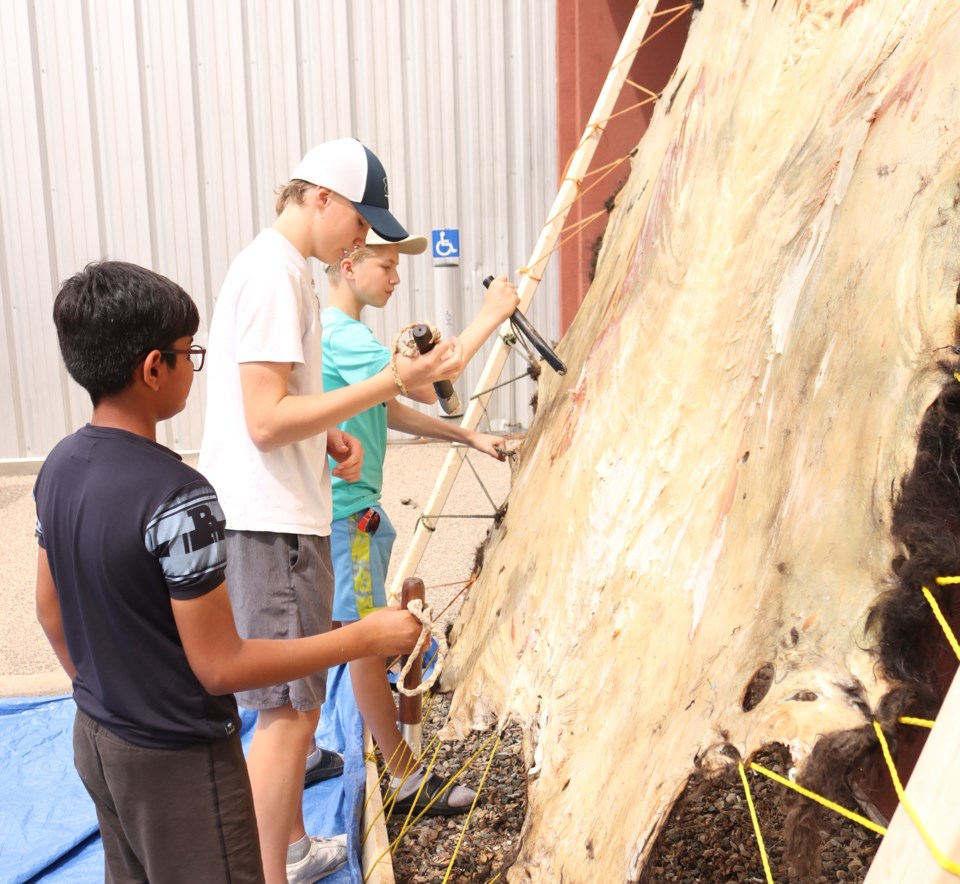YORKTON — For Grade 7 students from MC Knoll School in the city it was a rare opportunity to connect hands on with First Nations culture, as they helped ‘flesh’ a bison hide Friday.
Colin Arlt was on hand to give some instruction, and guide the youth.
Arlt told Yorkton This Week preparing the hide with the help of students was a way “to showcase how resilient we are" as Indigenous people.
Danii Kehler from Kawacatoose First Nation was on hand to help with her first bison hide. She said the experience was one she was looking forward too.
“It’s what our communities used to do. It was a way of life before colonization,” she said, adding it in an inherent knowledge for First Nations.
The process undertaken Friday – part of a lengthy process that would eventually create bison leather which can be used in many ways – were very much the same as have been used for generations by First Nations peoples across the Prairies, said Arlt.
The hide, in this case from a two-year-old bison from Bison Ridge Farm at Prince Albert goes through a series of steps including being soaked on water for half a day, having holes cut around its edge to facilitate stretching, and being smudged with sage, which were all carried out before the students arrived.
Using simple tools, some made of bone others metal, Arlt and the students were focused on removing the fat and any meat that was still on the inner side of the hide.
Once that was complete, Arlt said other steps would follow.
When asked how long the entire process would be Arlt said “it depends how many people are helping.”
For Arlt he is still learning too, with just over a year of experience doing hides. He said in that regard he owes much to teachers such as Joely Big Eagle, and Garrick Schmidt. He now looks to pass on the knowledge to others.
The leather, once the process is complete, will be distributed through the Buffalo Culture Collective, a Not for Profit that is working to help enable and allow the Buffalo to be the Buffalo again.
“The Buffalo was everything to many Indigenous peoples and, in many ways, still is. We aim to heal the severed relationship with the Buffalo through workshops, knowledge-sharing amongst Indigenous people, collaboration and attempt to reconcile the relationship between Indigenous people and their more than Human relations,” notes the organization’s website. “. . . Our goal is to bring together Indigenous and non-Indigenous people who are passionate about the Buffalo, working toward a common objective. We achieve this by rematriating Buffalo products, hosting workshops, and advocating for the return of Buffalo back home.”s






